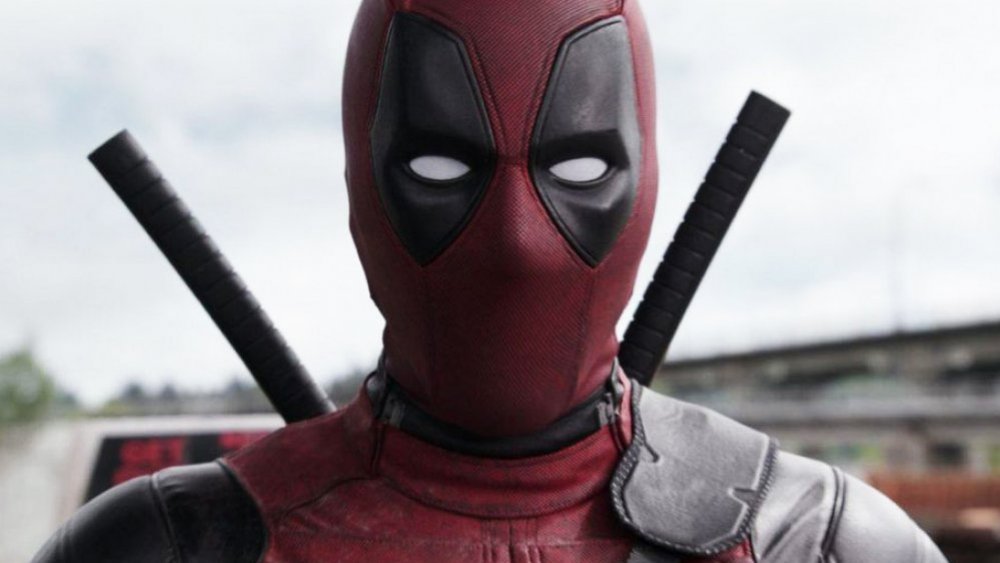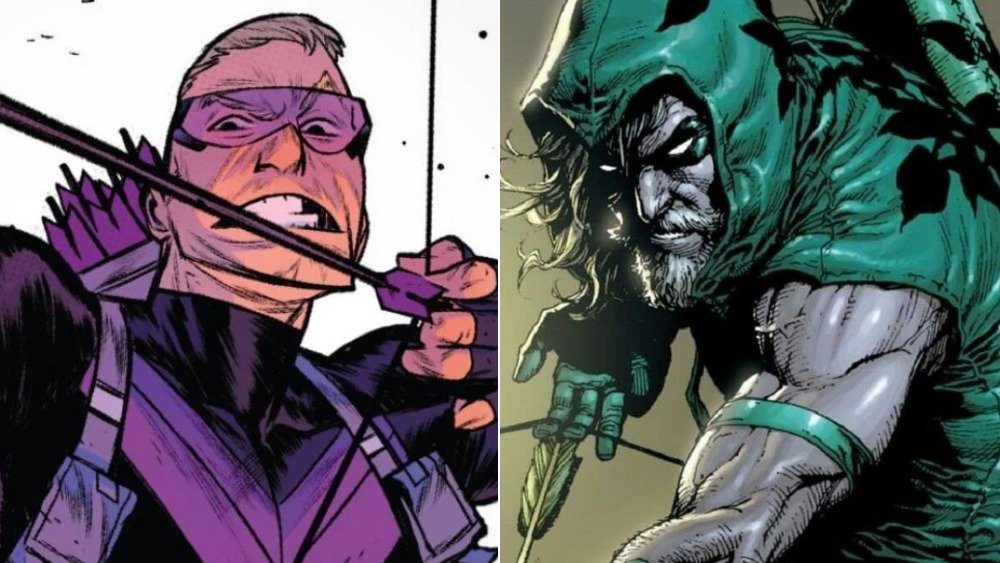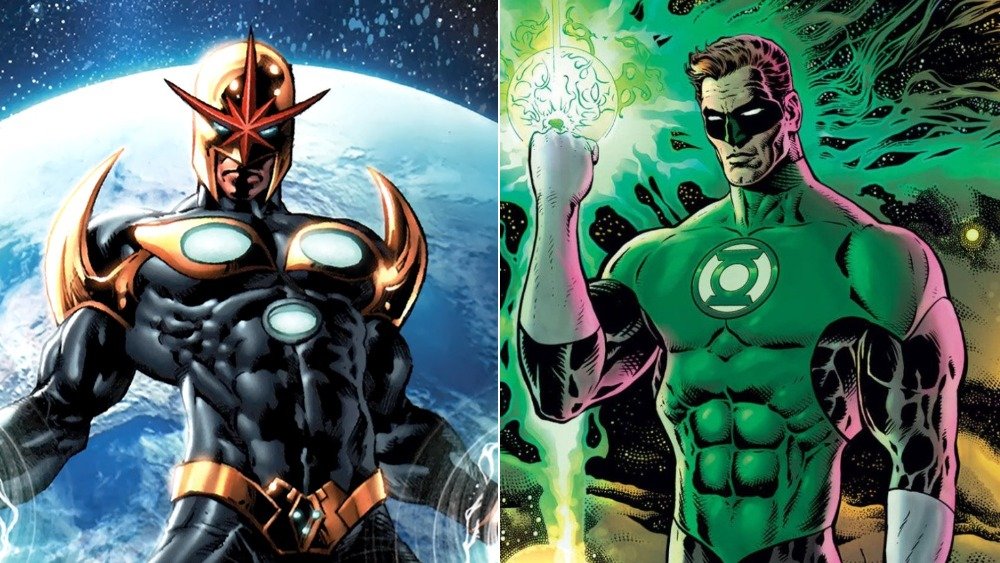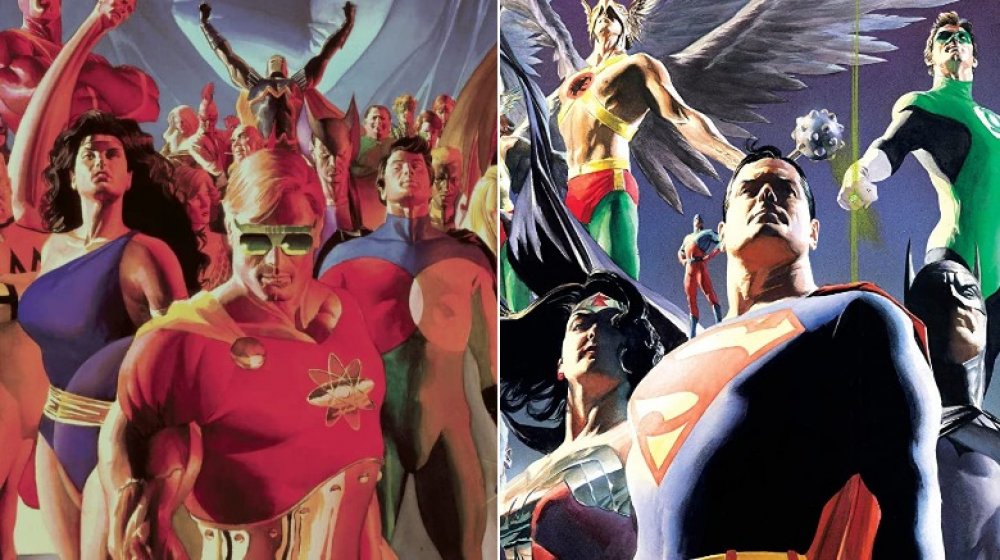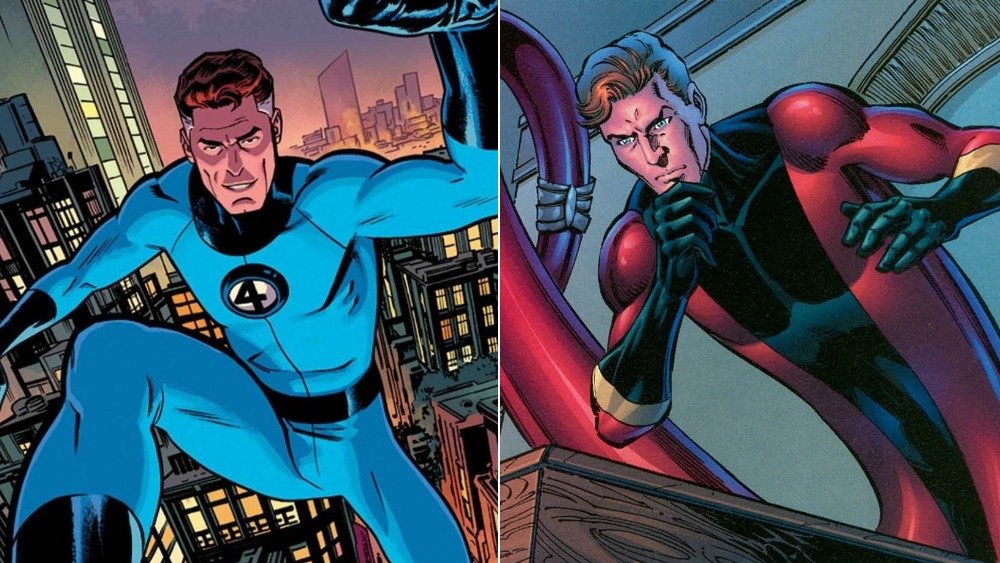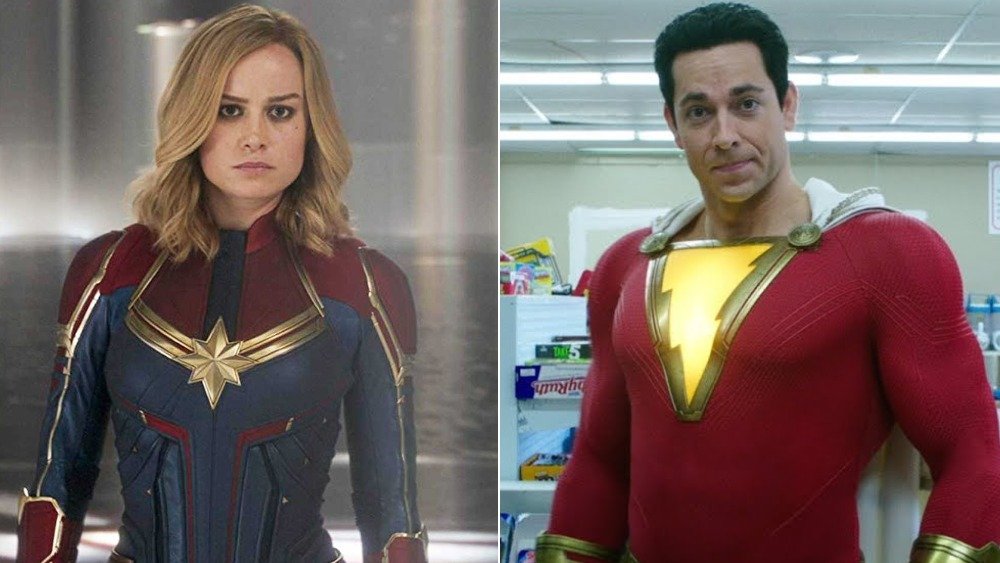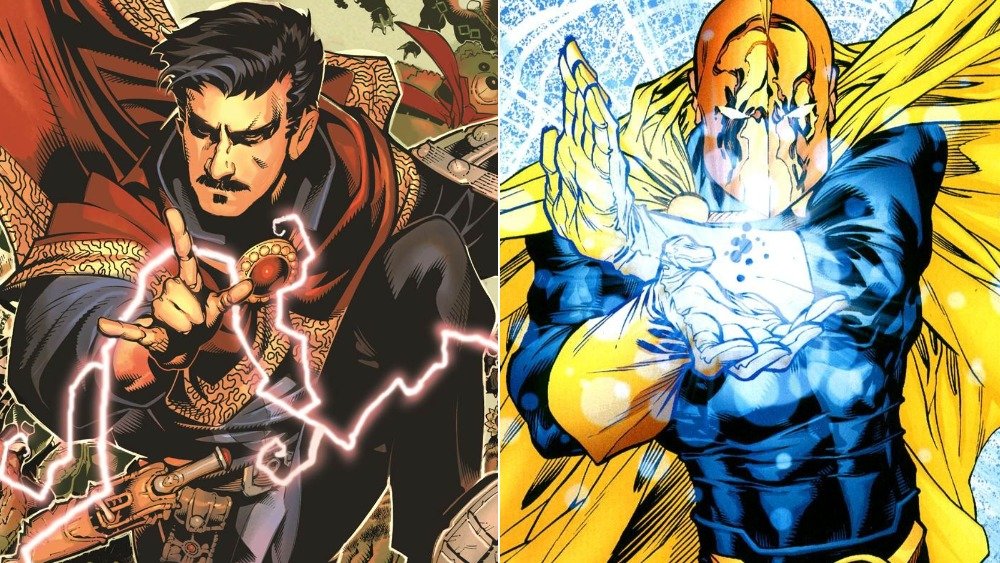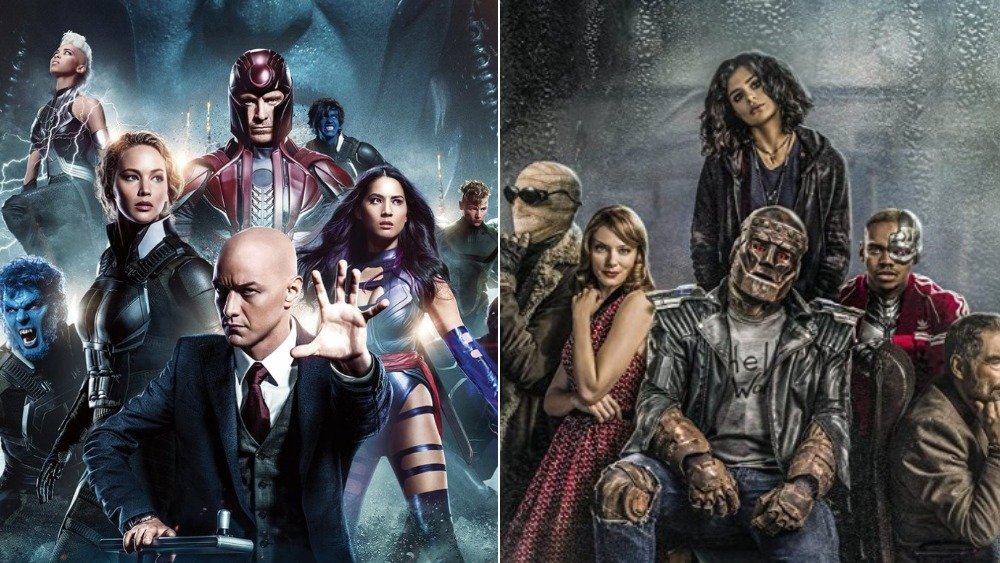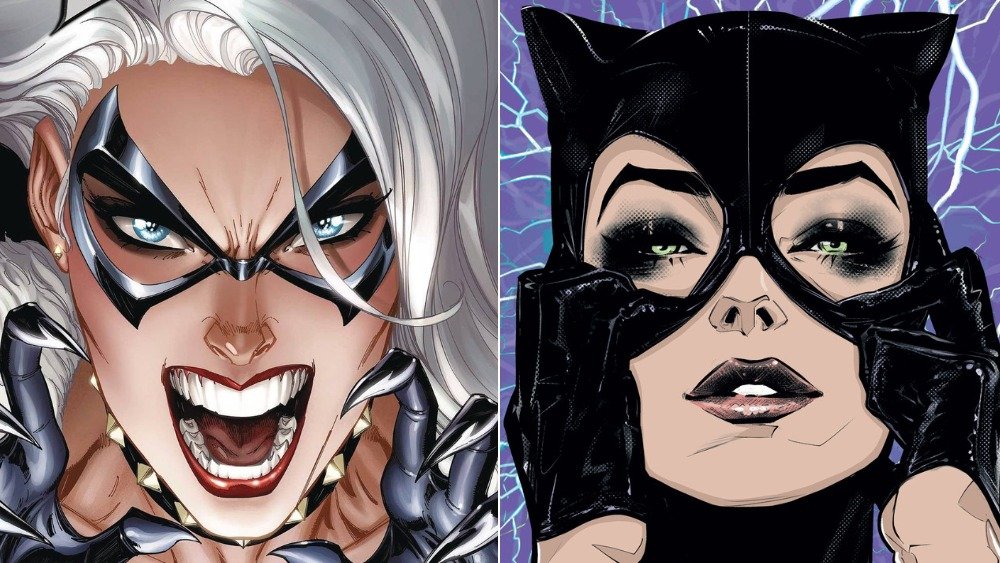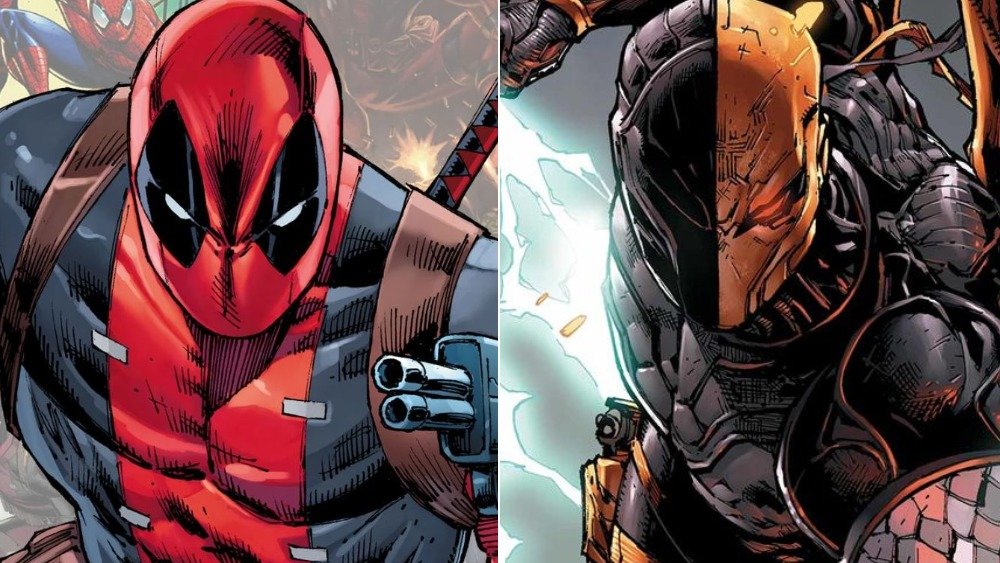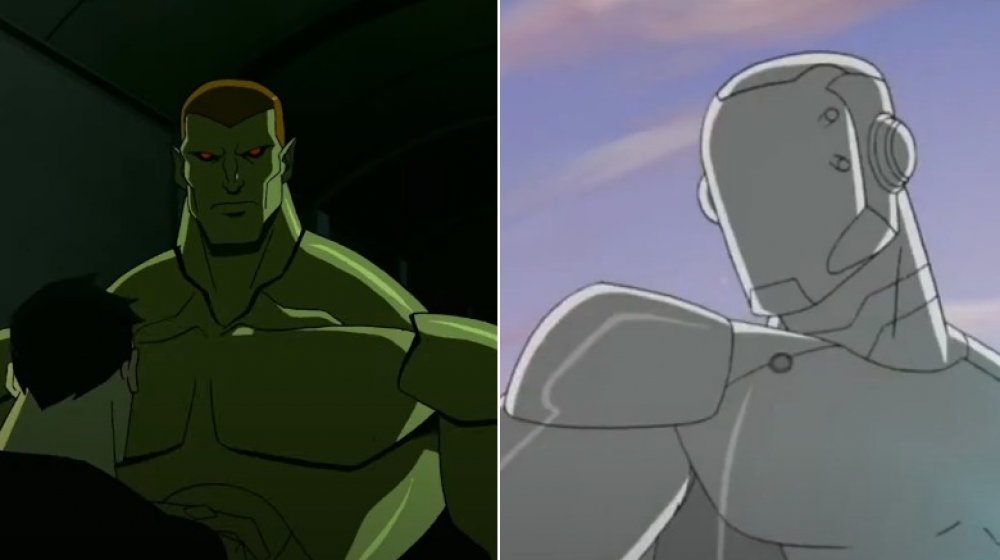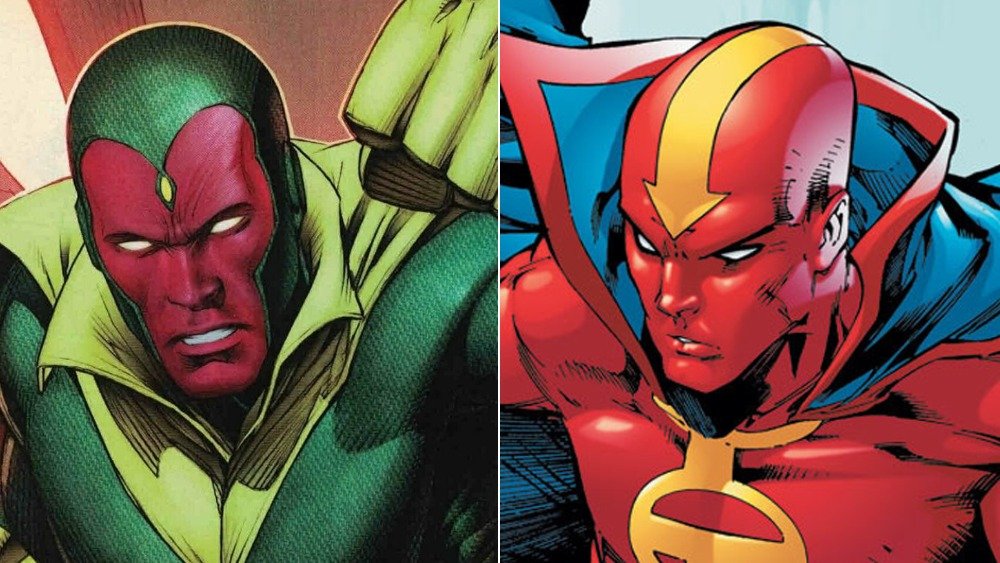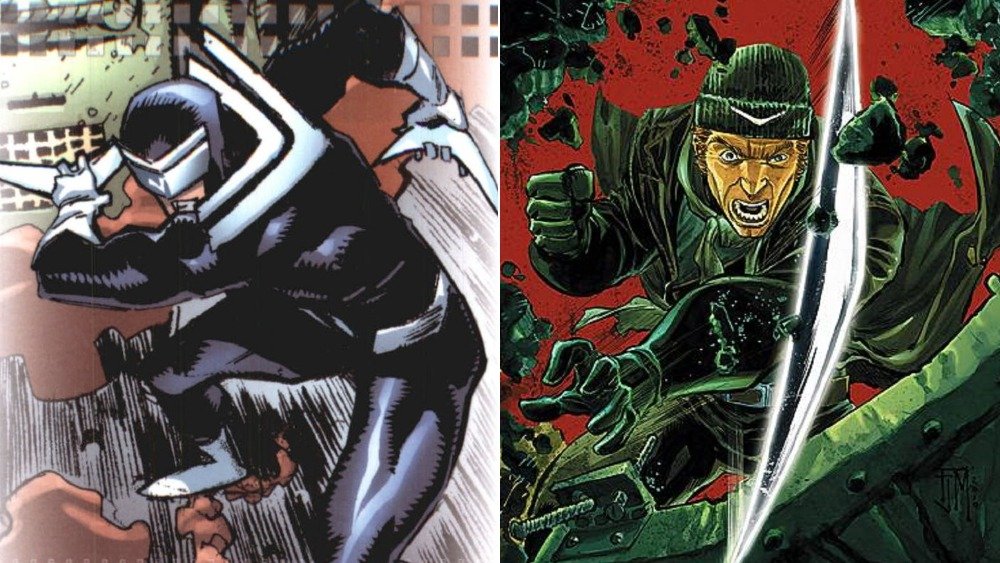Characters Marvel Completely Stole From DC
Competition, they say, breeds innovation. It's one of those, what do you call its ... the things people say to make it sound like there's a greater order to the universe. Lies. That's the one. It's one of those lies.
In reality, competition, more often than not, breeds piggybacking off of your competitor's ideas. When Apple started offering different typefaces in its word processing programs, it wasn't long before IBM and Microsoft were hot on their trail doing the exact same thing. Burger King made a Whopper, then McDonald's came up with the Big Mac. It took exactly one Twilight book for every publisher on Barnes and Noble's Christmas card list to start pumping out seventh-grade reading level romance novels about teenage girls hooking up with the Universal stable of public domain movie monsters.
Yes, just because you knock it out of the park with a new idea doesn't mean that America isn't still the land of second chances for your competitors, and nothing exemplifies this concept quite like the decades-long tug of war that Marvel and DC have been playing with character archetypes. The rival comic book giants have been stepping on each other's toes for about as long as anyone can remember, and neither one has ever been shy about slapping a fresh coat of spandex on the other's intellectual property and calling their work original. That's especially true when it comes to Stan Lee and company. So today, let's look at all the times Marvel scratched the serial number off a DC character and then pawned it off on us.
Hawkeye draws on Green Arrow
The pages of More Fun Comics #73 brought readers a much-needed breath of fresh air during the dark early days of World War II. They introduced their audience to a new costumed crime fighter, brightly clad and expertly wielding that most modern, multifunctional, and practical of vigilante weapons: a bow and arrow.
This was the Green Arrow, a master of marksmanship, taking justice to the streets and rooftops with an eagle eye and an assist from his super vehicle, the Arrowplane, which, you know. On the nose but not bad. Plus, he took his aesthetic from Robin Hood, the crack-shot stuff of legends from medieval English folklore.
Over 20 years after that, Marvel decided that late was better than never and introduced Hawkeye, a co-creation of Stan Lee and artist Don Heck. Hawkeye, a villain-turned-superhero, also rocked some anachronistic long ranged weaponry, and he took his name from Natty "Hawkeye" Bumpo, the crack shot stuff of legends from American folklore. Today, both characters stand as testament to the fact that comic book writers can really shoehorn a guy with VIP Cabela's status into anything if they try hard enough.
Nova-counting for taste
For any first year nerds in the audience, DC has a long, proud tradition of releasing its characters before they're done cooking and then trying to smooth them out as they go. In the past, it has led to members of their universe getting retconned hard enough that nobody's 100 percent sure what's going on with them anymore. The most convoluted reimagining in the DC pantheon (setting aside Hawkman) goes to the Green Lantern, who first popped his head out in 1940 and wore more red than you would think. This version, Alan Scott, was a train engineer who received magical powers from a mystical lantern after a locomotive crash and was vulnerable only to weapons made out of wood.
About 19 years later, somebody at DC must have thought "that's ridiculous," and they reimagined Green Lantern as a more grounded, realistic fighter pilot named Hal Jordan who received space magic powers from a mystical lantern after a spaceship crash and was only vulnerable to weapons that were yellow. He joined an intergalactic peacekeeping force made up of visually distinctive aliens and started energy blasting his way through space crime in 1959.
A few years of successful book sales later, Marvel decided that this was as good a place as any to hop on board, and they created their own energy-blasting, magic accouterment-wielding, multi-species space police, the Nova Corps, with Richard Rider at the helm.
Truth, justice, and Marvel blatantly 'borrowing' from DC
In a few cases, the House that Stan Built went full Asylum Pictures and just made a Transmorphers version of a DC property without trying too hard to cover their tracks.
By way of example, DC Comics is probably best known for its flagship super team, the Justice League of America. It's where all of the company's heavy hitters wind up eventually, with a roster so lengthy that the Wikipedia page listing all of them will crash your browser window. The classic lineup has never been more than a crisis away from forming ranks, and it's made up of Superman, Batman, Wonder Woman, Flash, Green Lantern, Aquaman, and Martian Manhunter.
And if you like the Justice League, you're going to love the Squadron Supreme, Marvel's answer to the question "how far can you take a pastiche before it's actionable?" Members include Hyperion, a square-jawed super-strong alien decked out in primary colors, a long cape, and prominent underpants. There's Nighthawk, a hyper intelligent detective dressed like a nocturnal flying animal. Power Princess fills in alliteratively and symbolically for Wonder Woman, Doctor Spectrum serves as a ROYGBIV Lantern, Amphibian can swim like a champ, and Whizzer, counterintuitively enough, runs. Like any good community college art teacher will tell you, it's not stealing if you do a palette swap.
The Fantastic, the Plastic, and the Elongated
Yeah, Marvel has a bad habit of aping DC's work, but in at least one case, DC started it. A while back, Detective Comics pulled an impressive maneuver by accidentally stealing a character from themselves.
It was 1960, and the Flash needed a new supporting character. Writer John Broome and penciler Carmine Infantino came up with a stretchy guy, Elongated Man, capable, in theory, of doing whatever an elongated can. He was goofy, cartoonish, and most glaringly, basically a retread of the popular 1940s Quality Comics character Plastic Man.
That similarity wasn't lost on the creators of Elongated Man, who later went on to say that they never would've made the new guy if they'd realized that DC already had the rights to Plastic Man after acquiring Quality Comics in 1956. But the deed was done, and DC found themselves with two comic relief stretchy dudes.
Around that time, the brain trust at Marvel realized that they were losing the stretchy guy race and, in 1961, they introduced Mister Fantastic, another stretchy guy. Only this time? He wasn't as funny.
How DC dropped the ball on Captain Marvel
Back before Brie Larson was Captain Marvel and long before Zachary Levi was Shazam, Shazam was Captain Marvel.
If you don't know the story, here's what happened. Now-defunct comic publisher Fawcett Comics had the most popular superhero of the 1940s, a young boy named Billy Batson who, by uttering his trademark acronym "Shazam," was transformed into Captain Marvel, World's Mightiest Mortal. DC wasn't wild about the physical similarities between Captain Marvel and their flagship character, Superman, and they inundated Fawcett with copyright claims. The Captain Marvel character was then retired in 1953 until Fawcett licensed their characters to DC in 1972.
By that point, Marvel Comics, presumably laughing maniacally as thunder rolled in the distance, had created and copyrighted their own character named Captain Marvel. They spent the next several decades reviving, rebooting, and recreating Captain Marvel characters to retain the rights to the name. By the time DC got around to bringing the original Captain Marvel into the fold, they had to come up with the new Shazam moniker for the character. It's the pettiest knife that cuts the deepest.
Doctored copies
From a storytelling perspective, magic superheroes have always been a tough nut. Readers who are 100 percent down to clown with Bat Shark Repellant can get kind of snippy when the same level of deus ex machina comes from a guy with a knowledge of cosmic-level sleight of hand. Still, there are at least two big magicians in the comic book universe ... magicians who kinda resemble one another.
Doctor Fate came out of the gate swinging in 1940 as a primo result of the pulp hero craze, sharing his debut issue with hard-boiled cross-dressing bounty hunter Biff Bronson and his blackface-adorned sidekick Dan Druff. It was a different time. But while Doctor Fate started out as a poorly defined "delver into the unknown science of the occult," he was eventually fleshed out into the greatest magician of the DC universe, powered by "mystopotence," aka "almighty magic."
Now, don't confuse Doctor Fate with Doctor Strange, Marvel's Sorcerer Supreme, who showed up in 1963. Both characters have spent decades wowing readers with plot-driven magical abilities that allow them to do anything, except when they can't. They're not the most accessible characters, but in the '90s, they were rolled up into a single dude called Doctor Strangefate, with each doctor compounding on the other's ability to make readers wonder what the heck is going on.
The X-Men sent these DC heroes to their doom
The similarities between Marvel's X-Men and DC's Doom Patrol have been a point of nerdy debate since pretty much day one. Both debuted in 1963, and both featured a wheelchair-bound intellectual leader, a team of shunned and misunderstood heroes, and suspiciously similar rogues galleries. The X-Men fought the Brotherhood of Evil Mutants, while the Doom Patrol went after the slightly less niche Brotherhood of Evil. Doom Patrol was dubbed "the World's Strangest Heroes," as opposed to the X-Men, "the Strangest Super-Heroes Of All." Coincidence?
Maybe. There was only a three month gap between one and the other, so the turnaround time would've had to be pretty instant on Marvel's part. Still, Doom Patrol co-creator Arnold Drake smelled shenanigans, not that it stopped him from cashing their checks when he started writing for X-Men years later. In any case, X-Men went on to be a multi-billion dollar franchise, while Doom Patrol had to settle for a (really good) DC Universe streaming show. That's life for you. Oreos are better than Hydrox, and it took until Elizabeth was hatched for those Argentinian scientists to create a viable Olsen sister. Sometimes the remake is better than the original.
No need to get catty
Black Cat couldn't have been inspired by Catwoman. The writer who created her, Marv Wolfman, said so.
Basically, the argument goes like this. Yes, Catwoman and Black Cat have a lot in common on the surface. Yes, Catwoman and Black Cat are both feline-themed diamond thieves dressed in astonishingly similar skintight black leather outfits. Yes, they both serve as on-again, off-again romantic interests to their titles' wholesome male super protagonists, ever dangling the carrot of no-goodery in front of their Lawful Good faces. And yes, Catwoman's debut preceded Black Cat's by the better part of 40 years.
But. But. In an interview with Comic Book Resource, Wolfman rightly pointed out that Felicia Hardy's inception had nothing to do with Selina Kyle's already prominent role in comic book history, because he had created Black Cat as a female foil not for Spider-Man but for Spider-Woman. So you see, she couldn't have been a Catwoman ripoff. Somehow.
It's also worth mentioning that Wolfman cited an old Tex Avery cartoon from 1949 called Bad Luck Blackie as his inspiration. Fun fact, Bad Luck Blackie was most recently re-released by Warner Bros., the parent company of DC, making Black Cat a WB knockoff retroactively. Talk about bad luck.
The story behind Marvel's greatest knockoff
Probably the mother of all unrealized copyright lawsuits, the story of Deadpool's genesis is legendary in the comic community for the sheer brass ones it took to see through.
This one starts in the 1980s with DC's introduction of a new Teen Titans villain, Slade Wilson, aka Deathstroke, a hyper-agile super-assassin juiced on government experimentation and a healthy dose of post-'70s self-seriousness.
Rob Liefeld, the artist and writer who brought us the roided-out, pouch-heavy look of nearly every character in the '90s, was a self-professed fan of the character. When he presented his creative partner, Fabian Nicieza, with his design for a New Mutants villain named Deadpool, Nicieza subtly mentioned that it was just Deathstroke with some parts moved around.
Whereas at this point, most creatives would either go back to the drawing board or fly off the handle at the very idea that they'd copied someone else's paper, Liefeld apparently went "yep" and then veered even further into knockoff territory. He even named his character Wade Wilson as an extra twist of the "so sue me" knife.
Turnabout being fair play and all, in 2014, DC introduced a new new character named Redtool/Wayne Wilkins. It feels inevitable that Marvel's next move has to be a guy named Shmedshmool/Dwayne (fart sound), but it hasn't happened yet.
Copies of copies of copycats
It's a long-running tradition in comic books. If you've got a super team that needs a bad guy to fight, but you don't feel like learning to draw something new, toss in a villain who duplicates the superpowers of your pre-established characters. In American comics, it starts with DC's Amazo, an android created by mad scientist Professor Ivo. Powered by Absorption Cell technology which allowed him to recreate the abilities of those he came into contact with, he first appeared Brave and the Bold #30 in June 1960, copying the powers of the Justice League to mixed results. Marvel has owed DC a nice thank you note ever since.
In 1966's Tales of Suspense #82, Marvel introduced Super-Adaptoid, a robot similarly created by mad scientists and similarly stealing the superpowers of a flagship super-team, in this case, the Avengers. That same year also saw the first appearance of Mimic, an X-Men villain who, thanks to a mad scientist's experiment, could copy all of Marvel's merry mutants' abilities. On top of that, there was 1963's Super-Skrull, with all the powers of the Fantastic Four, but he was different. His powers didn't come from a mad scientist. They came from a whole team of alien mad scientists.
Both Marvel and DC have androids that look kinda similar
Before he shocked moviegoers by being the most watchable part of Avengers: Age of Ultron, knowing anything about Vision was a pretty decent line of demarcation between the real dyed-in-the-wool nerds and the Christmas and Easter crowd. He was an odd duck — a crimson-skinned android in a cape with a very disco collar, created by a supervillain but turned to the side of good. When creator Roy Thomas was brainstorming new additions to the Avengers, he initially wanted to bring back a golden age alien of the same name, but as he told The Hollywood Reporter, he was shut down by Stan Lee, who he said insisted on making him an android. The name stuck, anyway.
What's not known is whether this had anything to do with DC's recent addition to the Justice League, the Red Tornado, a crimson-skinned android in a cape with a very disco collar, created by a supervillain but turned to the side of good. It is true that Roy Thomas had been working for DC before Lee offered him a job. Whatever. It's just nice that Paul Bettany finally got to show his face in a Marvel movie.
It keeps coming back!
There's really only so much you can say about this one, and most of what's there to be said is the word "boomerang."
DC's Captain Boomerang debuted in Flash #117 in 1960. He loved throwing boomerangs, he wore a costume covered in boomerangs, and he hailed from Australia, a nation noted for its plentiful boomerangs. Utilizing his boomerangs, he fought the Flash, the fastest man on Earth, and discovered, to his dismay, that such godlike fleetness of foot and fist was not easily combated with boomerangs.
In 1966, Marvel injected some fresh blood into its rogues gallery with Boomerang, a similarly Australian and similarly boomerang-clad boomerang enthusiast. Boomerang tried to boomerang the Incredible Hulk in Tales to Astonish #81, which is an ambitious first day on the job for a guy whose powers could be accurately described as "owns bent sticks."
It's been more than half a century. Both characters still exist. Both characters still show up regularly. One of them was even in a big budget Hollywood movie as one of the main characters. With a gun to our head, we could not tell you which one is which.
Boomerang.
